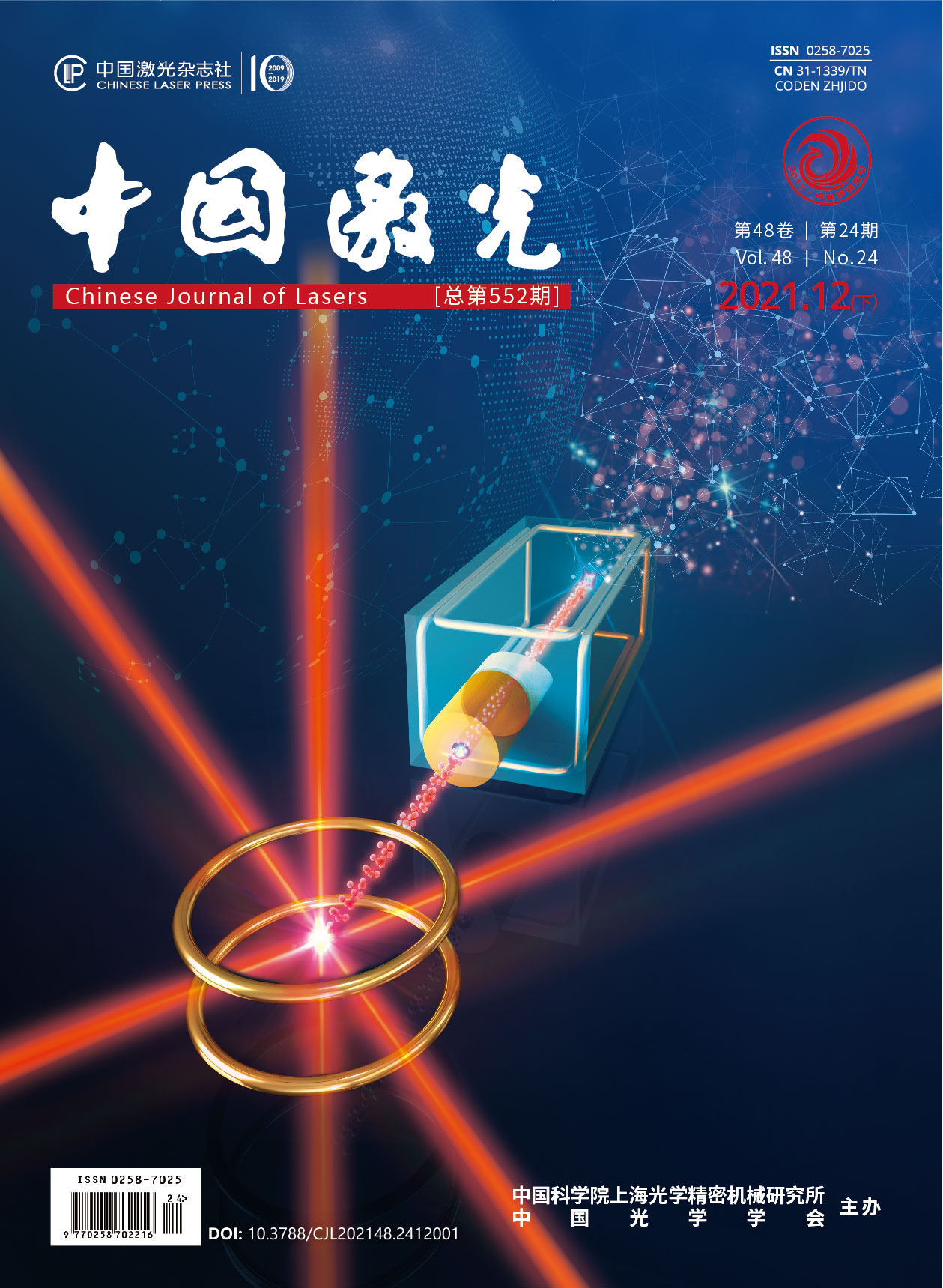基于人工神经网络的超冷原子实验多参数自主优化系统  下载: 1088次封面文章
下载: 1088次封面文章
Objective The optimal adjustment of experimental parameters is the most basic and important work in cold atomic experiments. Excellent experimental results cannot be achieved without the continuous optimization of parameters. In this paper, a multiparameter autonomous optimization system for ultracold atomic experiment based on artificial neural network is proposed. The setup of neural network structure, the autonomous optimization learning approach, and the construction of a multiparameter autonomous optimization system using the global optimization simulated annealing algorithm (SAA) are described in detail. The parameter autonomous optimization system is validated by using direct simulation Monte Carlo (DSMC) method to simulate the kinetic behavior of cold atoms in magneto-optical trap (MOT). The final results reveal that after about 30 h of optimization iteration, the input parameters of validation experimental system are effectively optimized, yielding a stable, efficient, and optimal experimental result. Therefore, the multiparameter autonomous optimization system based on artificial neural network can greatly reduce manual workload, enhance experimental system utilization, and improve the quality of the final experimental results. The proposed scheme provides a solution for engineering and remote control of cold atomic experimental systems.
Methods This paper presents a detailed scheme for a multiparameter autonomous optimization system using artificial neural networks. The setup of the neural network structure, the autonomous optimization learning strategy, and the construction of a multiparameter autonomous optimization system using SAA are described. The experimental validation of the proposed scheme combined with the DSMC method for simulating atomic cooling experiment is shown. Finally, four parameters are employed to optimize the number of cold atoms trapped in MOT: cooling laser power, cooling laser detuning, magnetic gradient, and axial velocity of cold atomic beam.
Results and Discussions For the combined simulation and deep neural network tuning experiments, the cooling laser power is set from 10 to 80 mW, the cooling laser detuning is set from -5Γ to 0 MHz, the magnetic gradient is set from 0.10 to 0.25 T/m, and the axial velocity of cold atomic beam is set from 4 to 40 m/s. From these parameter ranges, 64 sets of input parameters are randomly selected and brought into the simulation experiment based on DSMC method . For each of the 64 experimental results, target values are calculated. These parameters are pooled and utilized as initial training data for the neural network tuning system. A total of 348 iterations are conducted after approximately 30 h of optimization, and the final experimental results are shown in Fig. 4 and Fig. 5. The optimization of the cooling laser power in the parameter interval, the optimization of the cooling laser detuning in the parameter interval, the optimization of the magnetic field gradient in the parameter interval, and the optimization of the axial velocity of cold atomic beam in the parameter interval are shown in Figs. 4(a)--(d). Moreover, the total number of experiments, including 64 initialization and 348 optimization experiments, is shown in the horizontal coordinates. As a result of the initial random selection of 64 sets of parameters within the parameter interval, it can be seen that the four parameters change significantly at the beginning of the procedure. However, the degree of variation of each parameter in the interval progressively reduces and stabilizes during the next 348 iterations. Finally, the cooling laser power, cooling laser detuning, magnetic gradient and axial velocity of cold atomic beam are optimized to 19.86 mW, -2.76Γ, 0.18 T/m and 10.09 m/s, respectively. Figure 5 shows that the experimental values corresponding to the initial 64 sets of randomly selected parameters are rather uniformly distributed and that the atomic number gradually stabilizes with the later iterations. The optimal number of atoms obtained after the final optimization is 7.23×10 8. The prediction accuracies are within 0.5% for the entire 348 iterations. Those results show that the proposed scheme is computationally efficient enough to optimize a cold atomic experimental system with a high number of control parameters in real-time.
Conclusions This paper presents a multiparameter autonomous optimization system built on artificial neural networks and global optimization algorithm. By using the DSMC method to simulate experiments on atomic cooling in MOT, the effect of the autonomous parameter optimization system is verified. The final results show that the proposed scheme can optimize the parameters of multiparameter experimental system and produce a consistent and stable optimal experimental result. Subsequent applications only require equivalent changes to the evaluation judgment basis, which can be used to optimize the remaining experimental processes. Moreover, the experimental solution can be extended to other multiparameter tuned experimental systems such as atomic clocks, interferometers, etc. The proposed scheme provides an automatic and intelligent operational control solution for the engineering and remote control of cold atomic experimental systems. In addition, the manual workload can be significantly reduced, the utilization of the experimental system can be increased, and the quality of the final experimental results can be effectively improved using the proposed scheme.
刘乾, 谢昱, 李琳, 梁昂昂, 李文文, 程鹤楠, 方苏, 屈求智, 刘亮, 汪斌, 吕德胜. 基于人工神经网络的超冷原子实验多参数自主优化系统[J]. 中国激光, 2021, 48(24): 2412001. Qian Liu, Yu Xie, Lin Li, Ang’ang Liang, Wenwen Li, Henan Chen, Su Fang, Qiuzhi Qu, Liang Liu, Bin Wang, Desheng Lü. Multiparameter Autonomous Optimization System for Ultracold Atomic Experiments Based on Artificial Neural Network[J]. Chinese Journal of Lasers, 2021, 48(24): 2412001.







